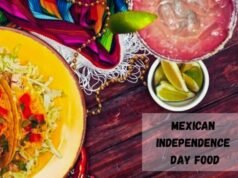Mexico is experiencing a tourist boom this year, with over forty million visitors predicted to visit the country by the end of 2023. One of the tourism sectors seeing the most spectacular rise is the gastro-tour. As well as providing a memorable experience, gastro-tourism drives community development, enhances local economies, and inspires innovation and creativity – not to mention being a delicious way to traverse the country.
Mexico as a nation is enjoying a real cultural resurgence, serving as an influence for games, being the location for great TV series and films, as well as a great place to visit on your holidays.
Food tourism is fast gathering pace in Mexico, with regular food events, festivals, and local traditions now curated into package vacations that allow visitors to experience a true taste of the country.
A Worldwide Treasure
Mexico’s culinary heritage has been recognized as an Intangible Heritage of Humanity by UNESCO – and one of the best ways to learn about and understand the country and its culture is through its food. Mexican cuisine traditionally comprises farming, ritual practices, ancient skills, and ancestral customs and manners. The techniques used in producing, preparing, serving, and eating food still make up an essential part of Mexican local and regional community identities and continue to reinforce social bonds.
Gastro tours are varied and can take in visits to specific destinations for sampling a range of street food and restaurant cuisine, as well as cooking classes where participants will learn how to prepare several classic Mexican dishes incorporating locally-grown, seasonal ingredients.
The Wonders of Mexican Cuisine
The key ingredients of classic Mexican cuisine include coriander, corn, chili, beans, piloncillo, tomato, and nopal, and it’s characterized by its sauces, which tend to be served as an accompaniment to main dishes. The origin of contemporary Mexican cuisine can be traced back to the pre-Hispanic period – when the Spaniards arrived in the country in the first part of the sixteenth-century fruits, oil, sugar, wheat, milk, rice, oregano, and black pepper were a few of the ingredients that started to be fused with the country’s existing cuisine.
This fusion ultimately resulted in some of the most famous Mexican dishes that are enjoyed around the world today, such as tacos, mole, carnitas, lime soup, chiles en nogada, and cochinita pibil.
Prepare for a Mexican Food Fiesta
A highlight of many gastric tours of Mexico is a trip to one of the country’s major food fiestas. The Three Kings Bread Fiesta (Fiesta de los Reyes), held in early January in Malinalco, is one of the biggest annual celebrations in Mexico. Celebrated over two days, visitors will experience a range of vibrant street parades, beautiful costumes and, of course, have the opportunity to sample some traditional Mexican fare. The fiesta marks the arrival of the three wise men in Bethlehem following the birth of Jesus.
And for those with a sweet tooth, the Ice Cream Festival is not to be missed! Head to Tulyehualco in March to witness this tradition which is over 120 years old. Many of the region’s ice cream producers continue to use ice harvested from the nearby snow-capped volcanoes – just like their forebears.
Gastro-visitors heading to San Felipe in November will want to put the town’s Shrimp Festival on their itinerary. A delicious celebration of fresh shrimp, you’ll have the chance to try local recipes while enjoying live music and other events.
Where to Head
For those looking to build their own gastro-tour of Mexico, there are a few must-visit spots to add to your vacation schedule. For example, Mexico City is home to some of the best taco street stands, breakfast bakeries, and mezcal bars in the country, while Puebla is widely considered to be the epicenter of Mexico’s ancient cuisine.
When it comes to street markets, it’s hard to beat Oaxaca, where you can also sample the distinctive cheese of the region and visit the Mercado Tlacolula, one of Mesoamerica’s oldest markets. Not to mention the local mezcal distilleries, many of which offer taster sessions for visitors. And for seafood, Baja and the Yucatan Peninsula are the places to go; fried fish with salsa and achiote (a red, peppery spice) and raw conch fillet marinated in lime juice are just a couple of the regional specialties on offer.
Gastro-Tourism in Mexico: Satisfying the Appetite for Travel
For those interested in visiting Mexico and getting an authentic flavor of the country’s culture and customs, a gastro-tour is a great choice. As well as allowing you to immerse yourself in Mexican heritage, you could also have the opportunity to learn new culinary skills, try new foods, and engage with the traditions of local and regional communities. In truth, it’s hard to find a more satisfying way to travel.
















[…] you arrive in Mexico, you’ll need to fill out a customs declaration form. This form requires you to declare any […]
Comments are closed.